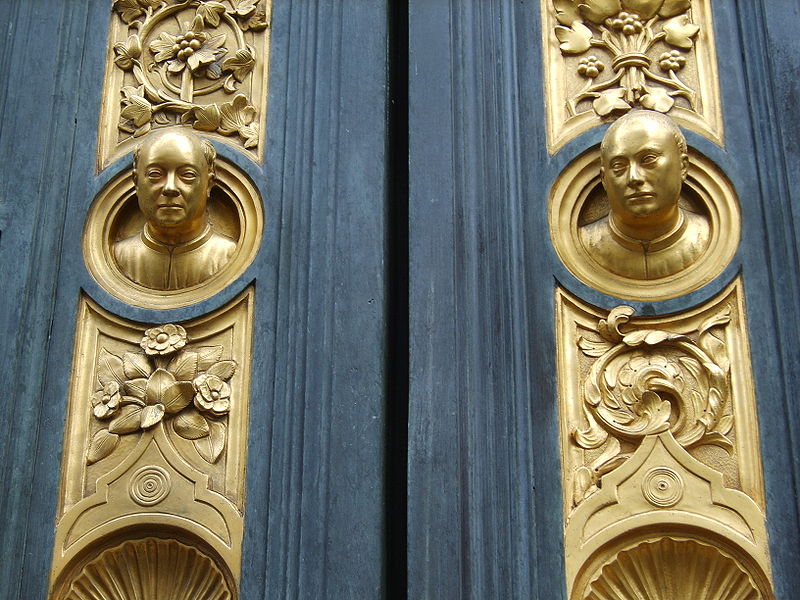Art historians have previously discussed how Ghiberti's self-portrait on the "Gates of Paradise" doors (shown on the far left of the image, 1424-52, see detail image here) can be interpreted not only as a signature portrait, but also as a promotional image.1 By placing his portrait in such a prominent public location, there is little doubt that Ghiberti was interested in promoting himself as an artist. Catherine King also records that "the Latin inscription alongside [the doors] reads in translation: 'Made with wonderful skill by Lorenzo Ghiberti.'"2
This past week, when looking at dates and details regarding the "Gates of Paradise," I was struck with an additional idea. The "Gates of Paradise" were completed in 1452, when Ghiberti would have been about 74 or 75 years old. Therefore, at such a late point in the artist's life, it is not surprising that Ghiberti decided to include his son Vittorio's portrait on the door as well (see portrait on right side of the image). Vittorio inherited the family workshop after his father's death (which was in 1455, only three short years after the "Gates of Paradise" were finished). I think that Lorenzo has anticipated his death (at least to some degree) by including his heir's portrait. That way, even after Lorenzo died, the Ghiberti family business would still be promoted on the baptistery doors.
Smart thinking, Lorenzo.
As other historians have noted, Lorenzo was quite a "shrewd" and "keen" businessman.3 The inclusion of Vittorio's portrait seems to be further evidence for this fact.
1 Catherine King, "Italian Artists in Search of Virtue, Fame, and Honour c. 1450-1650," in The Changing Status of the Artist by Emma Barker, Nick Webb and Kim Woods, eds. (London: Yale University Press, 1999), 60-63.
2 Ibid.
3 Ibid., 59. See also Gary M. Radke, ed., The Gates of Paradise: Lorenzo Ghiberti's Renaissance Masterpiece (London: Yale University Press, 2007), 67. Citation available online here.
